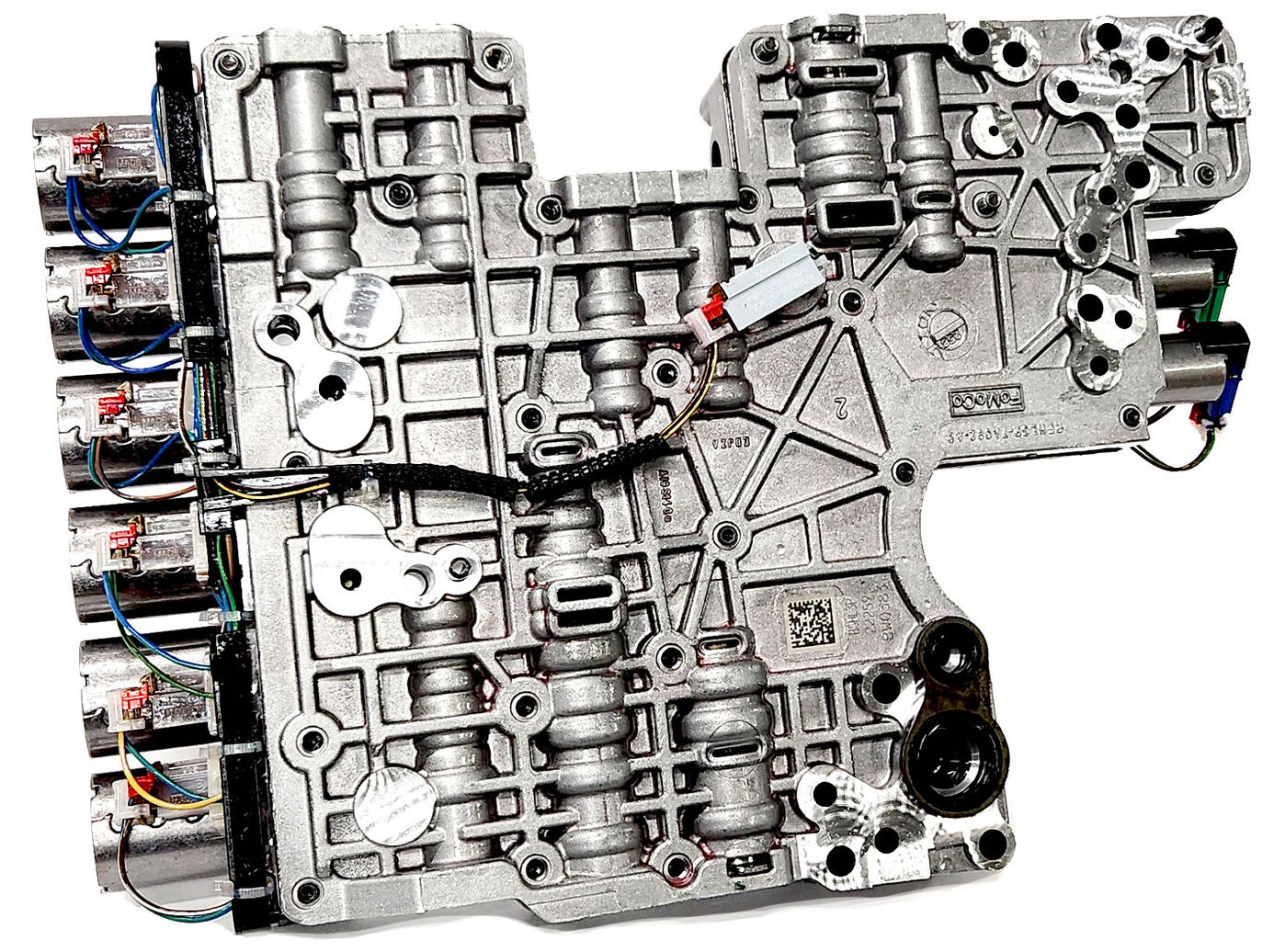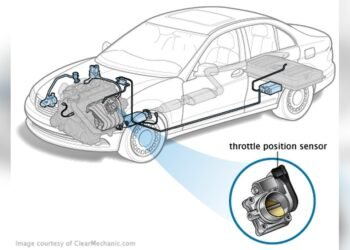Ford F150 transmission solenoid problems can cause gearshift delays, failure to change gears, and limp mode issues. These problems can lead to costly repairs if not addressed promptly.
When experiencing these symptoms, it’s crucial to diagnose and fix the faulty transmission solenoid to ensure smooth and reliable vehicle performance. Transmission solenoids play a vital role in the shifting process of automatic transmissions. In Ford F150 trucks, issues with these solenoids can manifest in various ways, affecting the vehicle’s performance and drivability.
Understanding the signs of a failing transmission solenoid and taking appropriate action can prevent further damage and maintain the optimal functioning of your Ford F150. Let’s explore common symptoms, implications, and solutions related to Ford F150 transmission solenoid problems.
Identifying Transmission Solenoid Issues In Ford F150
Transmission solenoids play a crucial role in the operation of the Ford F150’s transmission system. These small, yet powerful components are responsible for regulating the flow of transmission fluid and controlling gear engagement. When transmission solenoids encounter issues, it can lead to a range of performance problems in the vehicle. Identifying these issues early on is essential to prevent further damage and costly repairs.
Symptoms Of A Failing Solenoid
When a transmission solenoid in a Ford F150 begins to fail, it can exhibit several noticeable symptoms that indicate a potential issue. These symptoms include:
- Delayed or unpredictable gear shifting
- Skipping gears
- Getting stuck in certain gears
- Vehicle sluggishness
- Inability to downshift/upshift
- Check Engine light / transmission warning light
- Engine continues to rev when applying the brakes
Understanding Solenoid Functionality
Transmission solenoids are electromechanical valves that control the flow of transmission fluid within the transmission system. They are typically controlled by the vehicle’s onboard computer and are designed to open and close at specific times to facilitate gear changes and ensure smooth operation. When a solenoid malfunctions, it can disrupt this process, leading to the symptoms mentioned earlier.

Credit: m.youtube.com
Locating The Transmission Solenoids
Understanding the location of the transmission solenoids is crucial for diagnosing and repairing Ford F150 transmission solenoid problems. The transmission solenoid pack, which contains several solenoids responsible for regulating the flow of transmission fluid, is typically located on the side of the transmission.
Identifying the exact location of the solenoid pack is essential for accessing and diagnosing any issues related to the transmission solenoids.
Accessing The Solenoid Pack
Accessing the solenoid pack for inspection or replacement requires locating the transmission, removing any obstructions, and following specific steps to gain access to the solenoid pack. This process may vary depending on the specific model and year of the Ford F150, so it’s important to refer to the vehicle’s manual for detailed instructions.
Tools Required For Diagnosis
Diagnosing transmission solenoid problems may require the use of specific tools, including a code reader or scanner to retrieve diagnostic trouble codes (DTCs) from the vehicle’s onboard computer. Additionally, a multimeter may be necessary to test the electrical resistance and continuity of the solenoids.
Common Solenoid Problems And Diagnostics
Experiencing Ford F150 transmission solenoid problems? Look out for gear shift delays, failure to change gears, and the vehicle getting stuck in certain gears. These issues may indicate a faulty transmission solenoid that requires diagnostics and potential repairs to avoid further damage.
Gear Shift Delays And Failures
One of the most common problems associated with transmission solenoids is gear shift delays and failures. When the shift solenoid is faulty, it can cause the transmission to experience a delay in shifting or fail to shift at all. This can result in a sluggish or unresponsive vehicle, making it difficult to drive safely on the road.Troubleshooting With Error Codes
In some cases, you can diagnose solenoid problems by checking the error codes on your vehicle’s onboard computer system. These error codes can indicate which solenoid is malfunctioning, making it easier to diagnose and repair the problem. However, it is always recommended to have a professional mechanic diagnose and repair any transmission issues to ensure proper repair and avoid costly mistakes. If you experience any of the following symptoms with your Ford F150 transmission, it may indicate a bad solenoid:- Delayed or unpredictable gear shifting
- Skipping gears
- Getting stuck in certain gears
- Vehicle sluggishness
- Inability to downshift/upshift
- Check Engine light/transmission warning light
- Engine continues to rev when applying the brakes
Shift Solenoid Repair Cost
The cost of repairing a shift solenoid can vary depending on the extent of the damage and the cost of the replacement parts. In some cases, a simple cleaning or adjustment may be all that is needed to fix the problem, while in other cases, a full solenoid replacement may be necessary. It is always best to get a quote from a trusted mechanic before proceeding with any repairs. In conclusion, if you experience any of the above symptoms with your Ford F150 transmission, it is crucial to have the problem diagnosed and repaired by a professional mechanic. Ignoring solenoid problems can lead to further damage to your transmission and result in costly repairs down the line.
Credit: www.f150forum.com
Addressing Solenoid Malfunctions
When it comes to the Ford F150, transmission solenoid problems can cause a range of issues, from delayed gear shifting to complete transmission failure. One of the most common culprits is a malfunctioning solenoid, which can disrupt the smooth operation of the transmission system. Addressing solenoid malfunctions promptly is crucial to ensure the longevity and performance of your vehicle.
Quick Fixes For Solenoid Issues
If you suspect that your Ford F150 is experiencing solenoid problems, there are a few quick fixes that you can try before seeking professional help:
- Check the Transmission Fluid: Low or contaminated transmission fluid can affect the performance of the solenoid. Ensure that the fluid levels are adequate and that the fluid is clean.
- Inspect the Wiring and Connectors: Loose or damaged wiring can cause electrical issues that may affect the solenoid. Inspect the wiring harness and connectors for any signs of damage or corrosion.
- Reset the Transmission Control Module: In some cases, resetting the TCM can resolve minor solenoid issues. Consult your vehicle’s manual for instructions on how to perform a TCM reset.
When To Seek Professional Help
If the quick fixes do not resolve the solenoid issues, or if you are unsure about performing the troubleshooting yourself, it’s advisable to seek professional help. A certified mechanic with experience in diagnosing and repairing transmission problems can conduct a thorough inspection of the solenoid and the entire transmission system. They have the expertise and tools to accurately identify the root cause of the issue and perform the necessary repairs.
The Impact Of Driving With A Bad Solenoid
Driving with a bad transmission solenoid can have serious consequences that not only affect the performance of your vehicle but also lead to long-term damage. Ignoring solenoid problems can result in a range of issues that can compromise the safety and reliability of your Ford F150.
Risks Of Ignoring Solenoid Problems
Ignoring solenoid problems in your Ford F150 can lead to erratic shifting, transmission slipping, and potential stalling. This can compromise the overall drivability of your vehicle and pose a safety risk to you and other road users. In addition, continued driving with a bad solenoid can exacerbate the damage and result in more extensive and costly repairs.
Long-term Damage Considerations
Continued driving with a malfunctioning solenoid can cause long-term damage to the transmission system of your Ford F150. This can lead to premature wear and tear, reduced fuel efficiency, and ultimately result in the need for a complete transmission replacement. The financial implications of neglecting solenoid problems can be substantial, making it crucial to address any issues promptly to avoid costly repairs in the future.
Replacing A Faulty Solenoid
To address Ford F150 transmission solenoid problems, replacing a faulty solenoid is crucial. Symptoms include gearshift delays, failure to change gears, and the transmission getting stuck. It is recommended to fix a bad solenoid promptly to prevent further damage and costly repairs.
Step-by-step Replacement Guide
If you suspect that your Ford F150 transmission solenoid is faulty, replacing it is a straightforward process that you can do yourself. Here’s a step-by-step guide to help you through the process:- Identify the faulty solenoid: Start by identifying the solenoid that is causing the problem. This can be done using a diagnostic tool or by taking your car to a mechanic.
- Locate the solenoid: Once you have identified the faulty solenoid, locate it on your car. The solenoids are usually found on the side of the transmission.
- Remove the solenoid: Use a socket wrench or pliers to remove the bolts holding the solenoid in place. Carefully remove the solenoid from the transmission.
- Replace the solenoid: Take the new solenoid and carefully install it in the same position where you removed the old one.
- Reconnect the wires: Once the new solenoid is in place, reconnect the wires that you removed earlier.
- Test the transmission: Start your car and test the transmission to ensure that the new solenoid is working correctly.
Cost Estimates For Solenoid Repair
The cost of replacing a faulty solenoid in your Ford F150 can vary depending on several factors, including the cost of the solenoid itself and the labor costs involved in replacing it. On average, you can expect to pay between $150 and $400 for the parts and labor. If you’re considering replacing the solenoid yourself, keep in mind that the cost of the solenoid will vary depending on the make and model of your car. It’s always a good idea to compare prices from different suppliers to get the best deal. In conclusion, replacing a faulty solenoid in your Ford F150 transmission can be a simple and affordable process if you’re willing to do it yourself. By following the step-by-step guide above, you’ll be able to replace the solenoid quickly and easily, saving yourself time and money in the process.Preventative Measures And Maintenance Tips
When it comes to ensuring the longevity and optimal performance of your Ford F150’s transmission, taking proactive measures is crucial. By implementing preventative maintenance and following essential tips, you can mitigate the risk of transmission solenoid problems and avoid costly repairs. Let’s delve into the key measures and maintenance tips to safeguard your vehicle’s transmission.
Regular Transmission Fluid Checks
Regularly checking the transmission fluid is imperative in maintaining the health of the transmission solenoid. Ensure that the transmission fluid is at the appropriate level and is free from contaminants. Any discrepancies in the fluid level or quality should be promptly addressed to prevent potential damage to the solenoid and other transmission components. Schedule periodic inspections of the transmission fluid to identify any issues early on and take corrective actions as necessary.
Avoiding Common Solenoid Damages
Preventative maintenance plays a vital role in safeguarding the transmission solenoid from common damages. Regularly servicing the transmission system and adhering to the manufacturer’s recommended maintenance schedule can help prevent premature wear and tear of the solenoid. Additionally, avoiding aggressive driving behaviors such as sudden acceleration and abrupt braking can reduce stress on the transmission components, including the solenoid. Conduct routine inspections of the solenoid to detect any signs of wear or malfunction and address them proactively to prevent potential failures.
Professional Vs. Diy: Making The Right Choice
When dealing with Ford F150 transmission solenoid problems, one of the key decisions is whether to opt for professional repair services or attempt a DIY solution. Understanding the complexities and benefits of each approach is crucial in making the right choice for effective and lasting resolution.
Evaluating The Complexity Of Repairs
Assessing the intricacy of Ford F150 transmission solenoid repairs is essential. DIY repairs may seem cost-effective, but these solenoid problems often require intricate knowledge and specialized tools. The complexity of the transmission system necessitates a thorough understanding of the specific solenoid issues and their interplay with other components.
Benefits Of Professional Diagnosis And Repair
Seeking professional diagnosis and repair for Ford F150 transmission solenoid problems offers numerous benefits. Professional technicians possess the expertise to accurately diagnose solenoid issues, ensuring comprehensive and precise repairs. Additionally, professional repair services often come with warranties, providing peace of mind and assurance of lasting solutions.

Credit: www.ebay.com
Frequently Asked Questions
What Are The Symptoms Of A Transmission Solenoid Going Out?
Symptoms of a failing transmission solenoid include delayed gear shifting, skipping gears, getting stuck in certain gears, vehicle sluggishness, and warning lights indicating issues.
Can You Drive A Truck With A Bad Shift Solenoid?
Driving a truck with a bad shift solenoid is possible but not recommended, as it can damage the transmission further.
What Happens When A Pressure Control Solenoid Goes Bad?
A bad pressure control solenoid can cause transmission slipping, gear shifting issues, or the vehicle not moving when gears are engaged.
Will A Transmission Shift Solenoid Throw A Code?
Yes, a transmission shift solenoid issue can trigger a diagnostic trouble code related to transmission problems.
What Are Common Ford F150 Transmission Solenoid Issues?
The most common problems include gearshift delays, failure to change gears, and getting stuck in certain gears.
Conclusion
Addressing Ford F150 transmission solenoid problems is crucial to prevent costly repairs. Symptoms like gearshift delays, gear skipping, and engine warning lights indicate issues. Timely diagnosis and professional repairs can ensure smooth driving experiences and prolong the lifespan of your vehicle.















